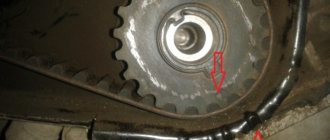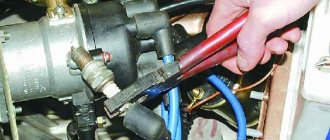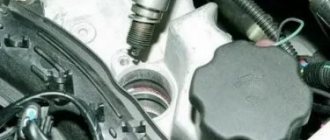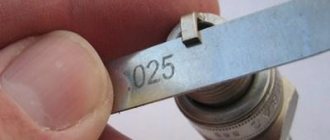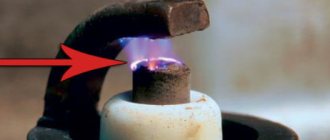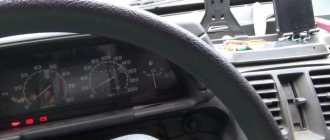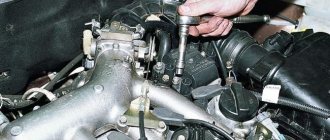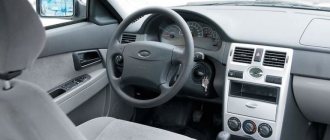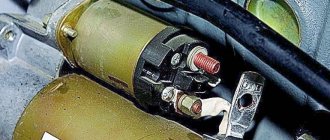VAZ-2106 history of the Soviet and Russian automobile industry. The Volzhsky Automobile Plant produced this model until 2006. Until now, on the roads of Russia, the CIS and far abroad, the “sixes” fulfill their duties, refining their “age” for transporting people.
The older the car, the more often the owner encounters problems starting the engine. There are many reasons why the engine does not start, ranging from a malfunction of on-board electrical equipment, to a malfunction of the fuel supply, even to low-quality gasoline.
This article discusses frequently encountered nuances that make it impossible to start the power unit of the sixth model Zhiguli.
Checking the spark plugs and spark
When the starter is turned on, the crankshaft rotates, but the engine does not start, nor should it be pushed for more than 5 - 7 seconds. Otherwise, during prolonged operation, the starter will overheat and fail, which will cause even more problems.
When the engine is cranked for a long time, the fuel supply system will easily flood the spark plugs with gasoline if, for some reason, they do not work well.
Obviously, startup is not possible. Candles need to be dried. Direct injection engines have a cylinder scavenging option. It helps to dry out the spark plugs to some extent - set the accelerator to full and turn the crankshaft. But this will not give a positive result if the ignition system does not work. You need to make sure there is a spark at the spark plugs.
To check, you need to unscrew the spark plugs, having first removed the tips with wires from them. Then connect the wires to the spark plugs and place them one by one on the head cover, cranking the engine with the starter.
A clearly visible blue spark should appear in the gap between the spark plug electrodes. If there is none on all spark plugs, then you need to explore deeper the ignition system and its elements.
During production, VAZ-2106 was equipped with injection and carburetor engines. The ignition systems and fuel preparation systems of these engines have different designs, and accordingly the types of problems differ. You need to start from simple to complex.
General faults
Common faults include failed spark plugs and high-voltage wires with tips (spark plugs):
- Carbon deposits form on the electrodes of the spark plugs for a number of reasons (poor quality fuel, valve timing is not adjusted, valve seals are not working properly, etc.), which prevents the formation of a spark. In this case, you need to clean the spark plug electrodes, rinse with gasoline and dry. Try to eliminate the cause of soot formation. It is also possible that the insulator between the electrodes may be destroyed - this problem can be solved by replacing the used product with a new one.
- High-voltage wires cease to perform their function when the insulation is broken. A short circuit occurs and the current does not reach the spark plugs. To fix this, replacing the conductors with new ones is the best option.
Malfunctions in injection engines
The lack of spark in injection engines may be due to the failure of the Electronic Control Unit (ECU) or one of its modules (in this case, the Electronic Ignition System).
An error in the operation of the ECU will be indicated by a light on the dashboard with the inscription Chek Engine; it will light up.
You can use a diagnostic scanner; it indicates the error number by which the malfunction is determined.
During diagnosis, the following reasons are most often identified:
- The ignition system module does not work. The main problem is the failure of two transistors responsible for the normal supply of sparks to the spark plugs. It’s difficult to repair it yourself, and not all workshops will do it. It's easier to replace it with a new block.
- There is no power supply to the ignition system module. There are two options. The first is that the ECU fuse is blown (it needs to be replaced), the second is that the ignition switch does not work (the fault in the lock needs to be eliminated, or it needs to be replaced completely).
- The ECU is not working. In this case, the control unit is completely changed.
Malfunctions in carburetor engines
In carburetor engines there are slightly more reasons for the lack of spark at the spark plugs than in injection power units.
Here are the typical reasons for the lack of spark on the spark plugs of a carburetor VAZ-2106:
- There is no power supply to the ignition coil terminal.
One of three reasons:
- The ignition switch is faulty.
- Possible network interruption.
- The fuse responsible for the ignition system has blown.
- The distributor has become unusable. This is a complex mechanism, the operation of which depends on the state of its elements.
The distributor can fail for several reasons:
- The carbon contact brush in the ignition distributor cap has crumbled or stuck.
- The breaker contact group is loose and has a lot of play.
- There is no gap or a large gap on the breaker contacts (should be 0.4 mm).
- The resistor on the slider has failed.
- The distributor cap is cracked.
- The outer contact of the runner plate is burnt.
- The splines on the distributor drive shaft were cut off.
All these problems are eliminated. Some require replacement of elements, and for some, prevention is sufficient.
- Switch malfunction if the engine is equipped with a non-contact ignition system. In this case, the entire unit is replaced or repaired in a special workshop.
These are common failures in the ignition system. If no defects are revealed during its diagnosis, it is necessary to check the system for preparing and supplying the air-fuel mixture.
How to direct power to the shield
Another effective method, applicable for a VAZ car and other vehicles, is to direct the power supply to the panel. To do this, you should perform the following sequence of actions:
- Open the hood, find the red wire coming from the ignition coil. The wires from the coil and spark plug are located at the rear of almost any V engine. In engines with four cylinders, they are located on the right, in the middle of the engine. Six-cylinder engines are distinguished by the location of the wires on the left in the middle part. Once you have decided on the wires, they should be removed to start the external power source.
- The wires must be connected to the coil and to the positive terminal of the battery. Thus, the required amount of power will be supplied to the panel to start the engine.
- We find the ignition coil.
- We unlock the steering wheel by inserting a flat-head screwdriver into the center of the steering column. Next you should press between it and the steering wheel. During the process, care must be taken to ensure that the pins do not break. Finally, connect the positive terminal of the battery to the coil. On top of it is a battery cable with a “+” sign under another short wire.
Next, remove the ignition switch wiring and, using a screwdriver with a dielectric handle, connect the positive terminal of the coil to the one that connects to the ignition switch. In this case, 12 volts will be connected directly from the battery.
These manipulations allow you to engage the coil, and the starter will start the engine.
Checking the gasoline supply
For engines with different mixture formations, diagnostics will be different.
Carburetor engines VAZ-2106
The main and most common malfunctions of the fuel system are:
- Fuel line clogged.
- Fuel pump failure.
- Damage to the carburetor or its components.
Diagnostics should begin with the carburetor, check the gasoline supply. To do this, you need to remove the cover from the air cleaner housing so that the insides are visible. Use the damper lever to simulate gas flow and see if fuel is sprayed from the atomizer. If it is sprayed, then there is no problem with the supply of gasoline; if it is not sprayed, then you need to inspect the fuel line and the fine fuel filter (often clogged with dirt).
The sore spot in the fuel system of the Zhiguli carburetor engine is the fuel priming pump. The most common places to wear out are:
- drive cam – subjected to grinding;
- the pusher is also ground down at the point of contact with the cam;
- the intake valve hangs, corrosion appears on the belt.
To check the functionality of the fuel pump, simply remove the hose going to the carburetor from the fitting and crank the engine with the starter. When the pump is working, gasoline will flow from the tube.
If all these actions were unsuccessful, then most likely you need to pay attention to the carburetor. This is a complex mechanism and, without experience, it will be difficult to check or repair it yourself. It is better to give this work to experienced craftsmen.
A common problem is clogging of the channels and jets in the carburetor system. It should be washed with a spray for cleaning carburetors when removed and disassembled. Again, it is better to do it at a service station where there is a special bath for washing and a compressor for purging.
Injection engines VAZ-2106
On engines with direct injection, checking the supply of gasoline to the system is easier. At the end of the fuel rail there is a valve covered with a cap. This valve relieves pressure in the fuel supply system by pressing it. When pressed, gasoline should come out of the valve hole.
After relieving the pressure, turn on the ignition, the fuel pump should start, restoring pressure. If it doesn't work, then that's the reason:
- there is no power supply to the pump (fuse blown, network break, etc.);
- failure of the pump (wear and tear, burnt-out electric drive, etc.).
If it works, but the effect is still the same (the engine does not start), you need to check the pressure regulator (possibly water got in and froze) and the presence of power supply to the injectors (should be 12V).
After diagnosing the fuel system and correcting problems in it, the engine still does not start. We will have to look for reasons in another system involved in the process of preparing the air-fuel mixture.
Gasoline pump
Before performing the check, you must make sure that a fuel filter is installed in the vehicle.
The quality of domestic gasoline is very far from ideal, so you cannot do without these elements. If you pump the pump with your hands, fuel should move in the fuel filter. If it is dry, then experts and experienced drivers recommend looking for air leaks in the line. This malfunction occurs quite rarely, but it does happen. If nothing resists while pressing the lever, then turn the engine crankshaft half a turn.
Checking the air supply
The air intake system rarely causes problems. If they happen, it is due to negligence and untimely maintenance. There are few reasons:
- Completely clogged filter element. To check, you need to remove the cover from the filter housing and make sure that the filter element is clean. If it is dirty, change it for a new one.
- The suction pipe or air inlet thermostat is clogged. Remove, clean and reinstall.
- The air channel is clogged (rag, etc.). This can happen on purpose or due to negligence during repairs. To check, the air filter housing and carburetor are removed, the air duct (suction manifold) is inspected, and what is not needed is removed.
This is what concerns ignition and fuel preparation systems. There are a number of other reasons why the VAZ-2106 engine does not start. It won’t be difficult to diagnose the problem yourself and, if necessary, fix the problem.
Crankshaft position sensor
The sensor itself is very reliable, and there is nothing to break there. However, it can become clogged with a thick layer of dirt and stop functioning. The way out of the situation is simple: just wipe it. As a rule, it cannot become dirty immediately and the problem will manifest itself gradually: at first your VAZ does not start well, and after a month the car is no longer able to start.
Since a lot of dirt accumulates on this sensor, its contact with the wire simply rots. This is already a common problem, but it can be easily solved by manually restoring contact. The crankshaft sensor is located on the oil pump.
It is important to know! It is not permissible to make contact using twists. So you will lose it in a month, so it is best to solder the contact and cover it with lithol.
Starter does not turn
When starting the engine, the starter does not rotate. There are several reasons, here are some of them:
- The battery is dead. To check, you need to measure the voltage with a load plug with double load relative to the battery capacity; it should not drop below 9 volts. If there is none, you can tell by the headlights, turn them on and look at them. A bright glow means everything is fine, a dim glow or no light means the battery is dead. To resolve this, you need to charge the battery using a charger.
- There is no contact at the DC power supply terminals. This may have happened due to oxide coating on one of the terminals. In this case, the headlights and instrument panel lights will glow normally, but there will not be enough current to power the starter. To check, you need to lift the hood and inspect the battery, or rather the terminals. They will have a coating similar to snow. The fix is simple: disconnect the terminals, clean the terminals from oxide on the wires and battery with sandpaper, wipe with a rag, lightly apply lithol to the contact surfaces of the terminals (will protect against oxidation), install them in place and screw them tightly.
- The ignition switch is broken. Checking is as easy as shelling pears: disconnect the wires that go to start from the lock terminals, connect them together. If the starter turns over, then the problem is in the lock. It can only be eliminated by replacement, since this unit in Zhiguli cannot be repaired.
- The starter solenoid relay is broken. This breakdown is recognizable by its characteristic features. When trying to start the engine, a clicking sound is made somewhere in the engine compartment, but the starter does not rotate. It is worth additionally checking whether the relay has failed or not. To do this, take a small insulated conductor and connect the terminals on the starter relay, those with large nuts (there are two of them). If the starter shaft rotates, then the relay is not working. It should be replaced. It is better to do this in workshops where there is the necessary special equipment.
- The armature winding on the starter burned out. Or the motor brushes are worn out. In these cases, when you try to start, the starter will not make any clicks. To determine the cause, the unit will have to be removed and diagnosed. If wear of the brushes is confirmed, they can be replaced, this is not difficult, but if there is an interturn short circuit, then the starter needs to be changed.
The engine starts and immediately stalls
There are times when the engine starts and stalls after a few seconds. There are enough reasons, several of them are given at the beginning of the article, but there the engine did not start at all. Let's look at why this happens:
- The fuel pump has failed. Does not supply enough fuel to the gasoline float chamber.
- The fuel line is clogged. Debris in the fuel line acts like a valve, moving in the flow and blocking the line in a bottleneck. This could be a piece of ice in winter.
- Clogged injectors in an injection engine. Solution to the problem: remove the injectors, check, wash if necessary and put them back in place.
- Connects the high-voltage ignition wire to the housing. If one wire shorts, the engine usually stalls during operation. If two wires or the central wire are shorted, the motor starts and stalls. Only a new set of wires will help.
- Worn sprockets and timing chain. This rarely happens, but it does happen. Due to chain elongation and sprocket wear, the valve timing constantly floats, especially if the hydraulic tensioner does not work. It is even possible for the chain to jump on the sprocket. In these cases, a service station and new spare parts are required.
INJECTION ICE
An injection car can have several types of injection systems:
- single injection;
- distribution injection;
- direct injection.
In the first two cases, the first thing you should check is whether fuel is flowing to the injection system. It is also necessary to diagnose the fuel regulator. If the car starts but does not start immediately, it is worth checking the fuel line for pressure loss. If during idle time the fuel has managed to drain into the tank, then to start you will have to turn the starter for a long time. In the case of mono-injection and distributor injection, clogged or “flowing” injectors rarely become an obstacle to starting.
Popping noises when starting the VAZ-2106 engine
It happens that when starting the engine, popping noises are heard, which can be heard both in the carburetor and in the exhaust system. Everything can be fixed, you just need to find out the reason for what is happening.
Popping sounds in the muffler
When the engine “shoots” at the muffler when starting, this means that gasoline has completely filled the spark plugs. It is possible to eliminate this reason. Only the elimination methods are different for different engines. It is described in detail in the chapter “Checking the spark plugs and spark”.
Popping sounds in the carburetor
If you hear popping noises in the carburetor when you start the engine, this means the choke is not working properly. This occurs due to the fact that the damper does not fit tightly to the diffuser body, forming a large gap, allowing a lot of air to pass through, leaving the air-fuel mixture leaner. This causes popping noises in the carburetor. Most often, the cause of this “shooting” is a weakening of the spring, which is installed on the damper rod.
It's easy to check: remove the air cleaner cover, press the valve in the carburetor with your finger and release. It should quickly return to its place and there should be no gaps between the body and the damper. If this does not happen, you need to purchase a repair kit for the carburetor and replace worn parts.
Poor starting of the VAZ-2106 engine in the cold season
The main problem with starting an engine in winter is frost. Defects that are not noticeable in the cold season in summer complicate startup. Everything freezes, especially the lubricant in the gearbox and gearbox thickens. The fact is that the oil in the engine crankcase is changed after a certain mileage of the car, but the box is forgotten or considered unnecessary. Therefore, in order to somehow facilitate starting the engine, you need to squeeze the clutch all the way.
If the battery is left in the cold for a long time, then a problem will also arise. It may not be charged enough to crank the engine. In this case, you need to have some kind of additional power source or charger.
Hard starting or the engine may not start due to extremely minimal compression in the cylinders. There is a way out of this situation: you need to unscrew the spark plugs, pour five milliliters of oil into each cylinder with a syringe, crank the crankshaft with the starter several times, screw in the spark plugs and try to start. The oil will circulate throughout the cylinder, increasing compression briefly. It’s better if you take care of this in the summer by having the engine overhauled at a specialized service station.
How to start the engine in winter or cold start.
As soon as the cold weather sets in, most of the cars in all parking lots categorically refuse to start, which we agree is not a normal phenomenon, because... Any good engine should start in any weather.
Here - initially the frosty weather should not exceed critical for your car. And you must calculate this temperature only experimentally. For example, a carburetor classic (my VAZ 2106) starts at a maximum of -33, and an injection Opel Vectra starts at -25. Below the temperature, it’s not worth trying without warming up.
But if your car does not start in clear frosty weather, then you should not panic and, in a desperate attempt, drive the starter, and, of course, drain the battery to zero.
First, you still need to make sure that all the electrical appliances of the car - the stove, radio, sidelights, heated glass - are turned off. And only then do you need to directly approach the most important thing - starting the engine in frosty conditions. If your car has been parked all night in a cold parking lot, then the battery must be warmed up. How to do it? Does it really need to be brought into a warm room and recharged? Of course, this would be a good option, but if there is no warm room and no charger, then in the morning you just need to turn on the headlights for 15-20 seconds, which will allow the battery to warm up a little, but you should not start the engine yet. We put the gearshift knob in neutral, depress the clutch - the oil in the gearbox has thickened from the cold - and turn the ignition key. If the car has the so-called. choke, then pull the choke handle all the way towards you. This will allow the carburetor engine to start faster. If the engine fails to start the first time, you need to try again after 30-40 seconds. If after 3-4 attempts you cannot start the engine, then you need to move on to another step. We open the hood, remove excess moisture from the battery terminals, as a rule - it will certainly form there in the morning, with a special dry cloth. We unscrew the battery terminals, turn them back and forth several times, tighten them again and try to start everything. If it doesn’t work after several attempts, then it’s better to stop doing it, otherwise there is a risk that you will simply flood the spark plugs with fuel. If you have already filled in, then you need to wait a little and try again. If this does not work, then you need to unscrew the flooded candles, and instead screw in candles with a high heat rating, which are ideal for winter conditions. Of course, they will not be able to last for a long time, but they are just right for the winter season. If you want your spark plugs to last as long as possible, then it would be right if you unscrew them from time to time, take them home, fry them properly from carbon deposits on an ordinary household gas stove, adjust the gap between the anode and cathode with a special probe, etc. .d. Only in this case can you hope that the spark plugs will serve you long and well. As soon as you start the engine, be sure to work the gas pedal properly - this will allow the engine to warm up faster and the battery to begin charging. As a rule, at idle speed, the engine speed does not exceed 800 rpm, and charging of the battery begins only when the engine speed begins to exceed 1200 rpm. And only when the car engine has warmed up properly (80-85°C), only in this case will it be possible to turn on the heater. If your car has an automatic transmission, then it must also be warmed up before driving, because cold, thickened oil will not allow the car to go far, and you risk permanently damaging the automatic transmission.
{loadposition user20}
- Author: admin
What will soot on the candles tell us? Engine diagnostics.
Checking engine compression
How to start your own blog on tuningtaza.
